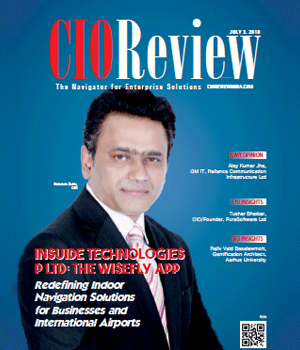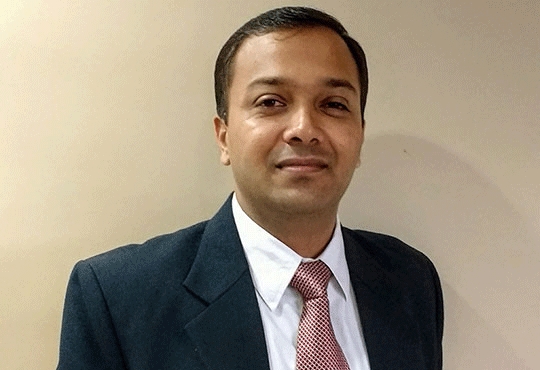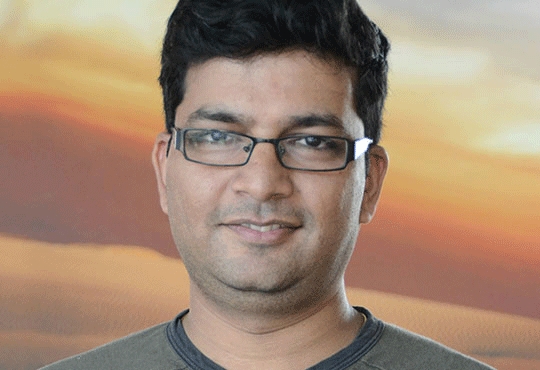
When the Internet of Things meets Analytics
Salil Godika, Chief Strategy & Marketing Officer, Happiest Minds Technologies
 The Internet of Things (IoT) is here to stay and predicted to grow into a multiple trillion opportunity by 2020. So, discussions about the IoT are not new anymore. Along side all these devices that can be connected, deployed and “read” using IoT, there is a newer discussion happening, revolving around Analytics and its applications for IoT. Internet of Things Analytics (IoTA), refers to the analytics around the vast amounts of data available from IoT devices. When one takes into consideration the number of electronic devices, cars, and household appliances that today are considered “connected”, the sheer volume of data and possibilities runs into the millions. The task is made all the more difficult by the fact that while the IoT is the common connector between these disparate devices, there is no one place where the data is sent to or collected.
The Internet of Things (IoT) is here to stay and predicted to grow into a multiple trillion opportunity by 2020. So, discussions about the IoT are not new anymore. Along side all these devices that can be connected, deployed and “read” using IoT, there is a newer discussion happening, revolving around Analytics and its applications for IoT. Internet of Things Analytics (IoTA), refers to the analytics around the vast amounts of data available from IoT devices. When one takes into consideration the number of electronic devices, cars, and household appliances that today are considered “connected”, the sheer volume of data and possibilities runs into the millions. The task is made all the more difficult by the fact that while the IoT is the common connector between these disparate devices, there is no one place where the data is sent to or collected.
Another way of looking at IoTA is to understand it as data connecting and creating meaning between the devices, offering a networked mode that allows interconnected devices to play off the data collected and analyzed from one another, and be “smarter.” Having so much data is of not much service if there is no way to collate, analyze and make meaning of all the disparate information.
This is where companies that offer connections between an IoT device and the manufacturer (R&D department, marketing, sales and customer service would all have a stake in understanding the data to improve their offerings) can offer a differentiating service – an IoT analytics solution. The potential of IoT analytics is huge. From gaining an understanding of how an epidemic spreads by tracking symptoms and locations of people to uncovering the reasons why certain points in a city are more prone to traffic jams or putting in place preventive maintenance programs for critical machines, real time IoT analytics have numerous applications.
So, what are some of the ways in which IoTA differs from the more traditional and understood analytics of a website or mobile device? For one, devices are not centralized, but distributed across a wide array of individuals. Rather than millions of users on a website, this is millions of devices that have no central focal point of data collection. Second, there are no clear parameters of what exactly is being measured, unlike with traditional website analytics, where every webmaster is looking at page views, clicks and such. With IoT devices, there are variations in the way the devices are used, which means the data collected will also vary. Third, and perhaps key, is that the purpose of analysis of IoT devices is quite a bit different than the traditional analytics. In IoTA, the idea is to garner information and thus understand usage, performance, service and maintenance, including any irregularities, of the devices and sensors themselves in order to make them “think” and “act” like intelligent beings.
Mobility and Big Data will be a requisite for successful real time IoT A, and companies must consider IT infrastructure and data governance that goes beyond what is available and used at present, in order to harness the power that IoT A can offer. When data is in the driver’s seat, it’s time to start thinking of the best ways to put it to use for a smarter tomorrow.
CIO Viewpoint
Upcoming Technological Advancements in Payments...
By Pinak Chakraborty, CIO of Airtel Payments Bank
Shaping the Future of AI: Talent, Innovation,...
By Yann LeCun, Chief AI Scientist at Meta
Future of Smart Manufacturing: Integrating Tech...
By Mohammed Kaishulla, Chief information officer, EPACK Durable
CXO Insights
When the Internet of Things meets Analytics
By Salil Godika, Chief Strategy & Marketing Officer, Happiest Minds Technologies
Cyber Risks: Balancing Innovation and Resilience
By Aditya Samag, VP-Cyber Risk, Marsh India Insurance Brokers
Perfect Plant Initiative Embraced with Industry...







